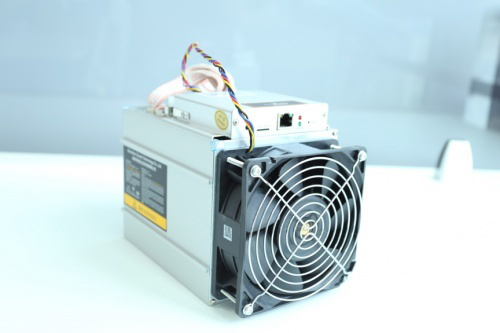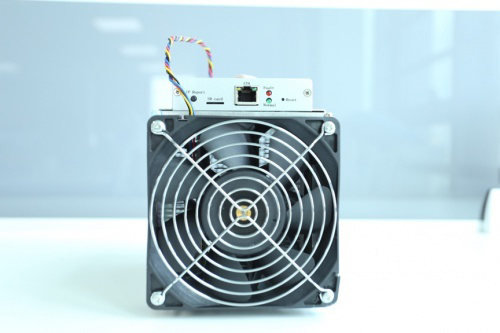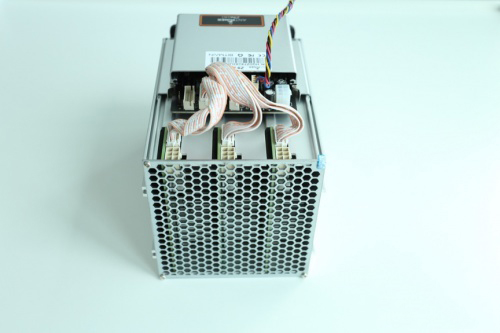ASIC Miner ICERIVER KAS KS0 Profitability In the realm of cryptocurrency mining, the Iceriver KAS KS0 miner has garnered widespread attention. Tailored specifically for the Kaspa network's KHeavyHash algorithm, it boasts high hashing power and low power consumption, making it an ideal choice for many miners. In this article, we will comprehensively assess IceRiver KS0 profitability while considering the Kaspa market conditions and the attributes of KS0 miner. Kaspa Market Dynamics Kaspa is a vibrant cryptocurrency network aimed at delivering high performance and scalability for everyday transactions. At the time of writing this article, the Kaspa coin trades at approximately $0.04959. But it's essential to note that cryptocurrency markets are highly susceptible to price volatility. Hence, investors must remain vigilant about market dynamics. Additionally, the Kaspa network's mining difficulty and reward mechanisms play a role in mining returns. Attributes of the IceRiver KS...
ZEC miner Z9mini's latest evaluation
Z9mini miners support the encrypted digital currency of the Equihash algorithm and can currently mine ZEC and other encrypted currencies. Now Antminer has S series, L series, D series, Z series, and other products; let's take a look at the performance of this mini version of the Z9mini miner today.
Z9mini basic parameters
Mining coin | All coins that support the Equihash algorithm |
Weight | 3.5kg |
Size | 202mm(L)*155mm(W)*125mm(H) |
Rated hash rate | 10k sol/s ±5% |
Rated power consumption | 300W ± 10% |
Z9mini packaging
Like other miners in the Antminer family, the Antminer Z9mini is packaged in a five-layer industrial carton. However, because the miner is a mini version, the package is half smaller than ordinary miners. In addition, the miners' packaging protection layer adopts shock-proof and anti-collision bubble protection pads, which can effectively ensure the safety of miners' transportation and reduce collisions during transportation.
Z9mini appearance and workmanship
Antminer Z9mini adopts a single fan, three hash board miners design, the body is integrally formed, adopts precision die-casting design and aluminum alloy material. This design provides vital protection for hash board chips and improves the overall cooling efficiency of the miner's fuselage.
As seen from the miner's top, the Z9mini is composed of three hash boards. Each hash board has a PCI-E6pin interface. Each PCI-E interface needs to be connected to a power supply. The Z9mini control board has a PCI-E interface for connecting the power cable, and the three data cables next to it are connected to the hash board and the control board respectively.
On the front of the miner, we can see configurations such as the IP address feedback button, network cable interface, reset button, and status indicator. The front fan of the miner is the air intake area; it is worth noting that the fan is removed from the heat dissipation area of the Z9mini, the honeycomb hole-shaped heat sink is used, and the overall design is more compact and smooth. The overall internal structure of the Z9mini is very compact. The heat dissipation module interval extension brings a larger heat dissipation area. The module interval also forms a unique air duct inside the miner, which maximizes fans and structural walls to maximize the heat dissipation effect.
Z9mini installation and debugging
The power supply used in this test is Antminer APW7, and the mining pool used is Antminer Pool, which Bitmain owns. The installation and debugging of Z9mini can be set according to the official tutorial of Antminer. For details, please refer to Antminer Z9 Mini Manual.
Z9mini heat and noise
This time, AntPool PPS mode is adopted for mining, and the room temperature of the test site is 27 degrees. The heat and noise of the miner were tested after the miner was running for 24 hours.
At a distance of 10cm from the air outlet of the Antminer Z9mini, the noise of the miners measured by the decibel meter is 65.5 dB. Compared with the noise of other miners, the noise of the Z9mini is still relatively low.
After running for about 24 hours, you can see that the chip temperature of Z9mini is about 56 degrees in the miner backstage, which is within the normal range.
Z9mini hash rate and power consumption
Antminer Z9mini hash rate curve per 10 minutes in AntPool
Antminer Z9mini power screenshot
In this test, we can see that the actual average hash rate of Z9mini is around 10.97k Sol/s, which is slightly higher than the nominal value. On the other hand, in terms of the power consumption test, the actual power of Antminer Z9mini is 252.1W, which is also lower than the nominal value.
Z9mini Summary
Miner products | Antminer Z9mini |
Actual hash rate | 10.97k Sol/s |
Actual power | 252.1W |
Power consumption per unit of hash rate | 22.98W/Sol |
Although the Antminer Z9mini is slightly smaller than that of ordinary miners, the product quality still maintains the Seiko quality of the Antminer. In the actual evaluation, the performance of the Antminer Z9mini is also relatively bright. Both the hash rate and the power consumption are better than the official standards; the noise performance is also good, and there is no noise after closing the door. All in all, the Antminer Z9mini is a worthwhile miner, and its compact size will attract you!
The content and pictures of this article are from the Internet, compiled and edited by ZEUS MINING.








Comments
Post a Comment
Tell us your opinion